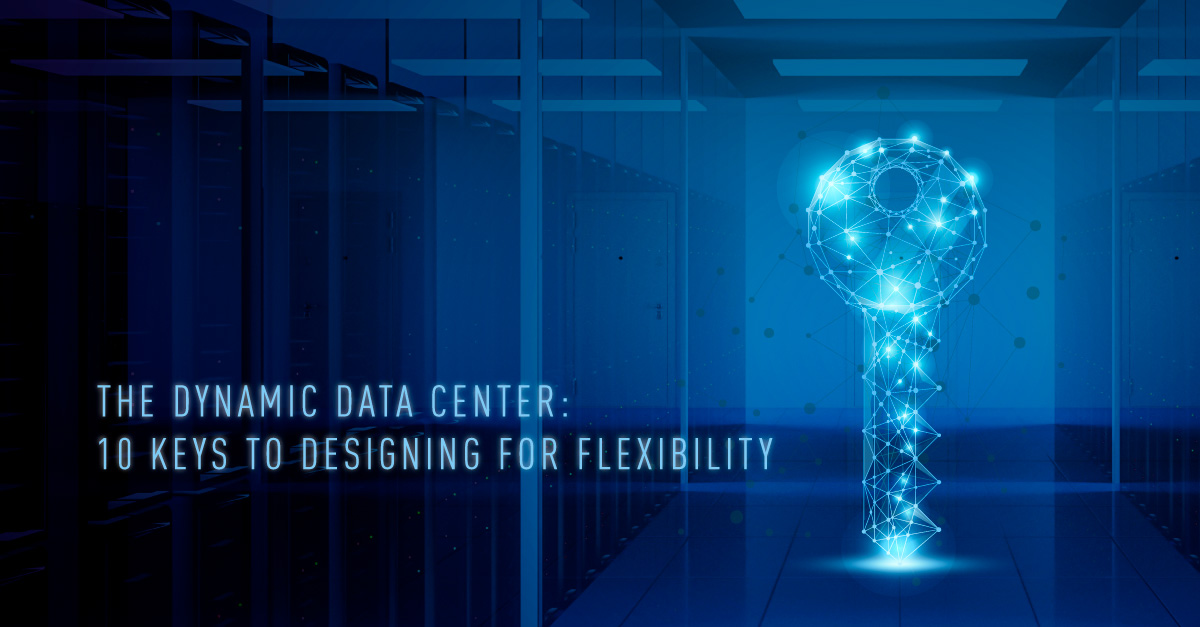The Dynamic Data Center: 10 Keys to Designing for Flexibility
Annie Paquette
February 18, 2019
- Categories:
- Industry Trends and Solutions
- Tags:
- Data Center

In our last blog supporting the new “Flexibility and Sustainability for the Dynamic Data Center” white paper by Server Tech’s own Marc Cram, we discussed the relationship between Moore’s Law and the resulting increased availability of data and its immediate consumption. In the first blog in this series, we talked about PUE and its contribution to the sustainable data center. For this last blog, we will shift our attention to the mission-critical facility itself and discuss flexible features that support sustainable design.
The economy has become increasingly driven by all things digital. Those buildings that once supported the old economy have become home to the data centers supporting the new economy. Manufacturing facilities, catalog distribution warehouses, and bank buildings are all being repurposed to house the next generation of a sustainable data center.
There are many design elements to look for when seeking a building suitable for housing a flexible, sustainable data center. Here are several to keep in mind:
- High ceilings: support almost any power and cooling distribution scheme, whether fully contained or housed inside shipping containers.
- Concrete floors: required to support the high load requirements of full racks of equipment, which can weigh thousands of pounds within a 24” x 36” footprint.
- Tall, wide doorways: needed to move racks in and out of the facility, as well as to support future infrastructure move, add and change work.
- A minimal number of interior columns: allows for flexibility in design and optimized space planning. The fewer the columns, the more racks can be housed in the same space.
- Large power feeds from the utility, preferably from renewable sources: provide the ability to scale and support growing future electrical loads.
- Ample external space: for energy sources such as generators, fuel cells, or solar PV’s.
- Ambient air temperatures that are low: and able to support free cooling, a key driver for lower PUE.
Inside, a flexible data center is likely to have these infrastructure attributes:
- Overhead power busway: provides the ability to dynamically shift power resources to different racks.
- Overhead cable raceways: segregated fiber and copper infrastructure is easier to manage here than underfloor.
- Standardized rectangular layouts suitable for standard IT racks: segmenting floor space into rack-friendly widths and lengths provides optimal space planning and utilization.
While this list focuses on the building, the new Server Technology white paper “Flexibility and Sustainability for the Dynamic Data Center” brings the discussion to the level of the IT infrastructure itself. It also highlights the role the new HDOT Cx outlet has already played in changing the power distribution landscape. Server Technology is proud of this innovative contribution to the ongoing quest for flexible, sustainable data center operation.
Thanks for your submission. One of our Power Strategy Experts will get back to you shortly.